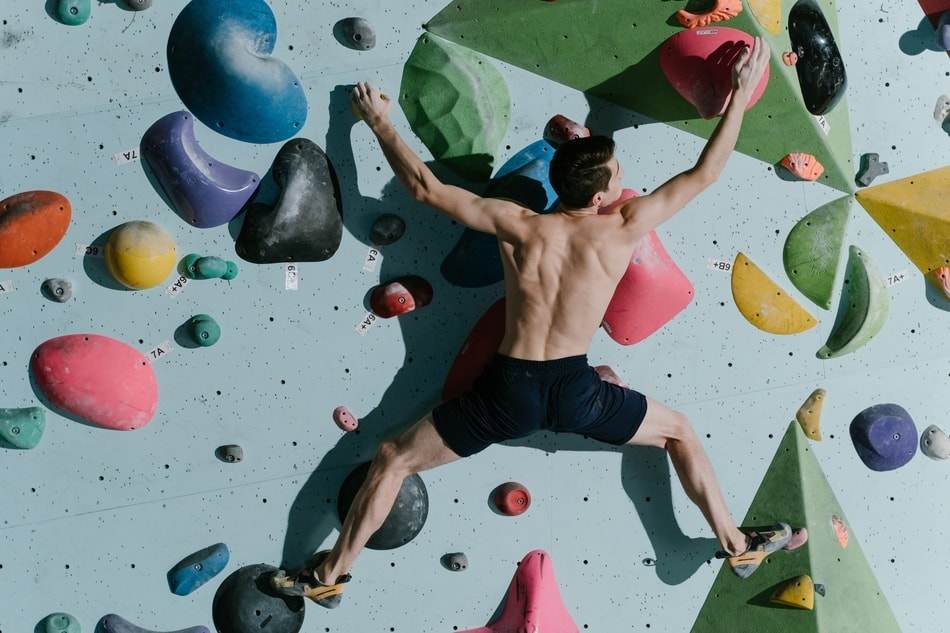
If you’re reading this, I would assume you’ve already started climbing and want to get better. I started out climbing 5.6 in Top-Rope, but now I primarily boulder. Here’s my secret to building up climbing strength and how I went from a VB to a V6 and 5.12 in 5 months.
Diet, Practice, Rest and Repeat
In order to increase your climbing strength, you’ll need a combination of a few factors. Don’t worry about your size, although it’s true that certain body types may have an edge against others, but a proper balance of a healthy diet, constant practice, adequate rest, and discipline is the key to building up your climbing strength.
Whether you’re doing bouldering, top-rope, speed climb or lead climb, I believe these secrets that I’m about to share will help you become the climber you strive to be and reach level’s you didn’t think was possible before.
Safety
I know a lot of you may be eager to become the next spider-monkey, but you must consider all the safety implications that comes with climbing as it is a risky sport and should be acknowledge as so.
If you’re injured already, please don’t attempt to climb as this can make it worse. If you insist on climbing with a light injury, please go slow and select a couple of levels below what you normally climb to avoid further injuries.
I primarily do my climbing indoors, so all the advices down below will be for indoor climbing, which it may translate to outdoors too. My advice is not guarantee to work for everyone, but I feel that it will be helpful to some.
Diet
You are what you eat and if what you’re eating is not what your body needs to build muscle you might be struggling a lot to move on to the next level.
Secret #1: Protein Shakes
Before you roll your eyes, I’m not a gym-nut. I’m not a nutritionist either, but what I have is personal experience that I hope will work for you.
Not all protein shakes are created equal, some tastes awful or feel like you’re drinking glue, and some are just down-right too sweet.
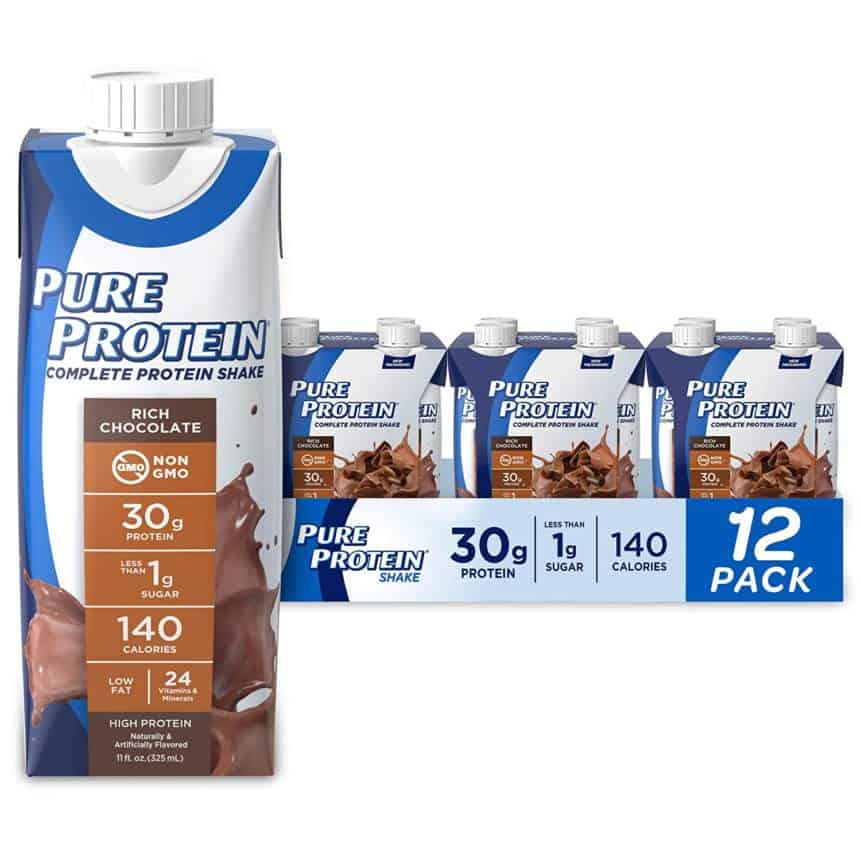
I personally prefer “Pure Protein” Rich Chocolate Flavor Protein Shake, it comes in 11 fl. oz, packing a whopping 30g of protein, 24 vitamins and minerals, 140 calories, and less than 1g of sugar.
I’m a fairly busy person so I don’t have time to make myself a shake every morning or before I go to the gym. After getting back from a workout, I might feel lazy and not want to make it or sometimes I just forget.
I get a dozen paper bottles protein shakes for under $20 from Amazon and because I subscribe I save additional 5-15%.
They’re one of the most affordable, best tasting, and high protein shakes out there and I’ve tried many from Muscle Milk, Vega, and Premier Protein, and etc.
Not to beat around the bush, but your body needs protein to build muscles. It doesn’t matter how you get your protein, but aim for around 25-30g of protein. I personally like shakes because it’s easy, affordable and it’s having the least friction for building up the habit. There’s no powder to scoop, bottles to wash, it’s just grab and go.
I have it for breakfast and it lasts me until lunch and I drink half a bottle before climbing and drink the other half after climbing.
Secret #2: Supplements

I personally prefer not to take supplements if I can get it from my normal diet of meats, fruits, and veggies. I am lactose-intolerant, so I don’t get my protein from dairy, but luckily, the protein shake I mentioned above doesn’t cause my discomfort.
Anyway, I’m not a fan of taking supplements either, but there may come a time where you’re practicing as hard as you can, but your climbing is at a halt. Mine was moving from V4s to V5s and V6s. I was climbing 3 times a week, almost 2 hours per session and I was downing my shakes, but I hit a wall.
(Now before you take any supplements, please speak to your primary care physician to see if that’s okay for you to do. When taking supplements always speak professional help and guidance for dosage and allergies.)
I take my supplements before I go to bed, because it’s during sleep that your body repairs itself from the climb you did earlier. Perhaps you might not have all the necessary vitamins and minerals, or supplements. Give your body the necessary building blocks it needs to repair all damage accumulated from the climb.
I take Fish Oil and Vitamin C for maintaining healthy joints and skin repair. Nothing like some good ol’ vitamin C to keep your skin healthy and your immune system strong.
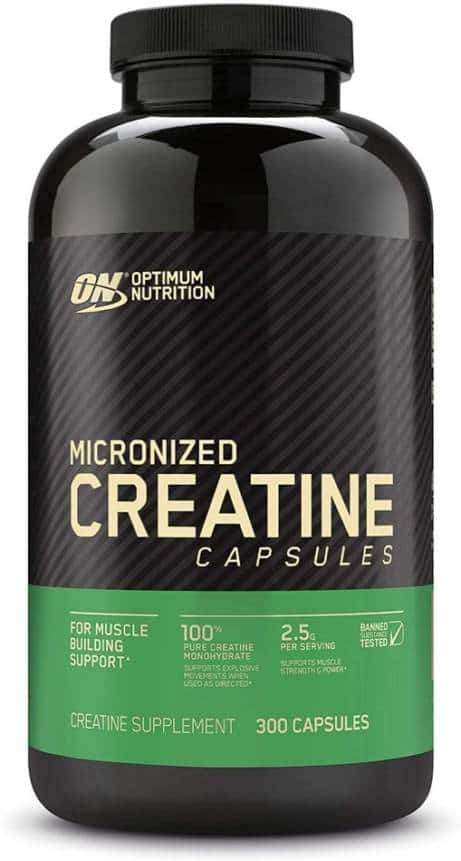
In addition to drinking my protein shake, I don’t always do this but I occasionally will mix in about 5-20g of Micronized Creatine Powder into my shake. Micronized Creatine Monohydrate helps support muscle building. I’m not a nutritionist or a professional fitness trainer, there are a lot of good research done on the use of Micronized Creatine that you can read about with a bit of google search.
Lastly, my ace up my sleeve is Vitamin B12, this is the vitamin that’s used in supplemental drinks like 5-hour energy and Red Bull. I take the vitamin in tablet form for easy, cost, and so I don’t have to deal with all the sugar and taste that comes with an energy drink.

Vitamin B12 plays a key role in energy metabolism, in simple language, it gives you a boost in energy.
I take one or two tablets about 30 minutes before I climb to let the metabolic process start. You will find yourself having a lot more energy to climb difficult routes and last longer. I had a V5 that I was working on about a month ago and I threw everything I had at it, but I can only complete 80% of the route and then I tried taking Vitamin B12 before the climb and I got it on my 2nd try that day without breaking a sweat.
I felt light and I felt that I had energy to spare, that’s how much of a difference it makes.
Taking supplements doesn’t rob me of the feeling of accomplishing a climb, I gave my body the ingredients it needs to perform at my best and I’m not religious about taking my supplements either, just ever so often.
Practice
The saying that practice makes perfect is heard all around, but even if you aren’t able to be perfect, you will go further than you did previously.
I practice 3 days a week at my local bouldering gym, at my peak I did 5 days per week. M-W-F at the bouldering gym after work and TUE-THUR doing Top-Rope before work.
Unfortunately, the routine was not sustainable, I simply did not have the time or the energy to keep up with this schedule. I now have referred back to my old schedule which is 3 days per week, usually with a 1-day gap, but I occasionally do it back-to-back.
I train at the bouldering gym for about 1-2 hours per session.
Secret #3: Do Your Warm Ups
I cannot tell you how many people I see that skips warm ups and go for the hardest problem thinking that they’re at full energy and thus will perform the best.
Even cars take time to accelerate, no cars go from 0 to 60 instantly and the same applies in climbing.
I do a warm up route usually one or two levels under what I normally climb to just get my joints moving and my muscles stretched out. I find that this minimize injury and readies your body to climb harder routes.
Practicing aimlessly is not beneficial, so try to set a goal to climb a certain difficulty by a certain date. Be realistic with how long you give yourself. My personal goal was to climb one level up in bouldering every month until I reach V7.
I started only lasting about 30-45mins in the gym climbing VBs and V0s, but because I set a goal, I was motivated and determined to get to V1 by the next month and before I knew, it I was climbing V6s and soon to move on to V7s.
Perhaps you don’t boulder, but you do Top-Rope, same principle applies, I went from climbing 5.6 to 5.12+ in the same 5 months.
I also do speed climb, which I’m able to clear half the route in under 30 seconds and have dabbled with lead climb.
So, it doesn’t matter what you climb, set a goal, and stay focus on the goal.
Secret #4: Attempt the Hardest Problems within your 1st Five Climbs
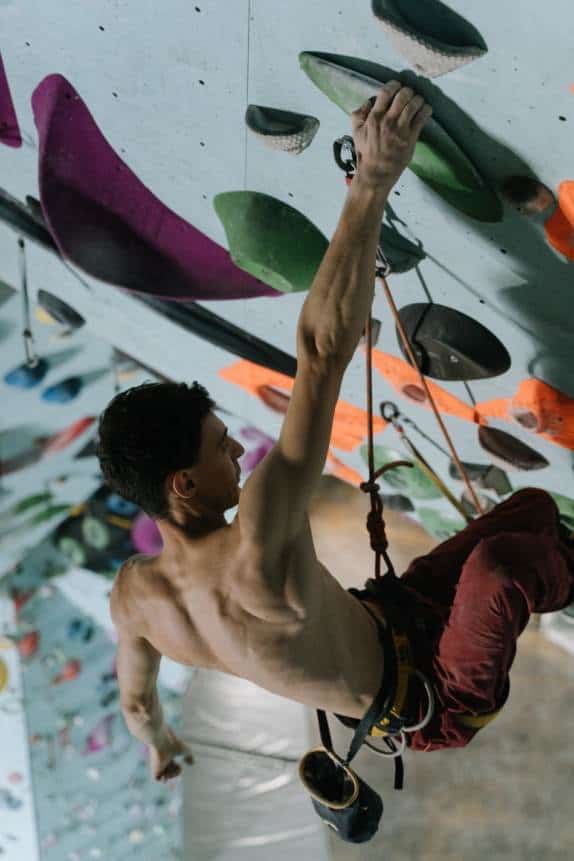
Energy is finite and the most difficult problems you’re stuck on will require you to be in the best shape, similar to the Olympics.
After climbing all this time, I’ve learned that my body performed the best on the 3rd or 4th climb. The previous couple of climbs gives my muscle to adjust for the problem ahead while still maintain enough energy to climb at the optimal.
Everyone knows that your body build muscle by tearing and repairing, but when your muscle gets stronger especially if you’ve been working on a single problem for quite some time; your body will move up the wall better because of muscle memory and it will feel easier, but this doesn’t push the muscle to tear if your body is comfortable with the climb.
Your 1st five climbs allow you to really push and try to surpass the crux of a problem. Within your 1st five climbs, your body is still fresh, it has the energy and the mean to peak on any giving problem. That’s where the muscle will tear and when your fingers and tendons will learn to adjust to a new grip difficulty.
Secret #5: Winding Down
Even after your most difficult climb, try to do wind down by doing easier problems. This will help reduce lactic acid buildups, the primary reason your muscle fatigues.
Winding down also lets you get a few more climbs before you call it quits, which builds endurance.
It might not be the highlight of the day, but it’s absolutely crucial to not just call it quits when you think you reach the max, because most of the time, if you just sit for a bit and massage the arms and legs, you’ll be able to climb more and build endurance.

Secret #6: Don’t Stretch Before Climbing
I’m throwing out this tip with a grain of salt. I still do bit of arm circles before each climb, but I do not yoga prior to my climb. Some may argue with this but here’s my reasoning for why you shouldn’t stretch before you climb.
Before a climb your body is locked pretty tight, hence why a lot of athletes that do more agile and flexible sports will stretch prior to showtime.
Stretching out will allow you to be more nibble and flexible, but a lot of climbing problems requires your body to by locked tightly such as the need to use a heel hook or a toe hook, especially on problems with overhangs.
Problems that require explosive energy may also be hindered by stretching.
If you’re limbs are all stretched out and like spaghetti, you may not be able to do a certain problem, not because you don’t have the strength, but simply because your body is too relaxed.
For doing more dynamic moves, you do want to stretch a little as to not pull a muscle. I say dynamic and not explosive, explosive moves generally needs compression from the legs, the biceps and triceps which means your body will need to tense up to release.
Although, explosive moves fall under the Dynamic moves category or used interchangeably, I personally classify dynamic moves as and technical moves that requires you to really extend your body such as a karate kick, an iron cross or lunging with full body extended.
Moves likes these generally requires a swing of some sorts followed by a strong grip on the proceeding hold piece. So, before you start your problem, observe and see if you need to stretch.
Bonus Secret!
I appreciate your reading this far and for that you deserve a reward, here is a bonus secret that I originally wasn’t going to include, but because you’re awesome, I’m going to tell you.
Oscillate Grip Pieces/Problems/Styles/Disciplines
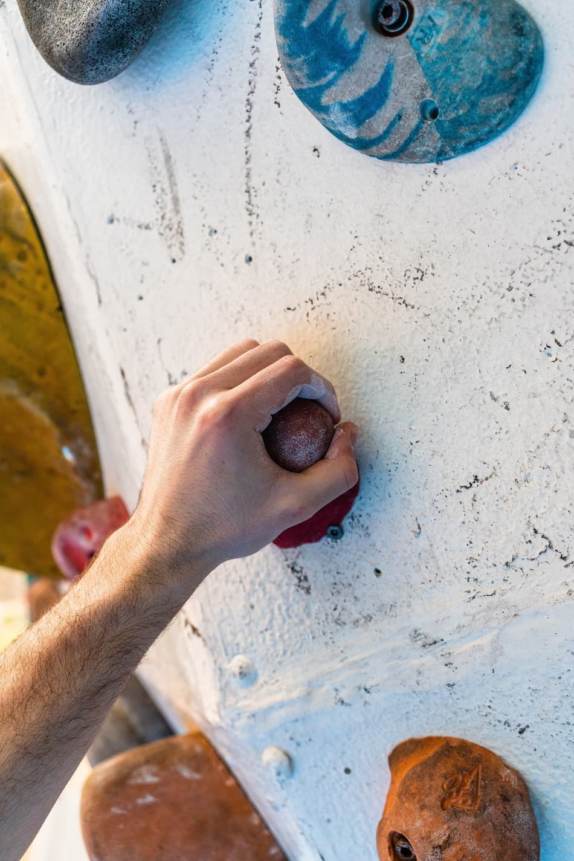
When I first started climbing, all I wanted was flat, vertical wall paved with jugs. I chickened out of every problem that looks different to my norm.
I used to hate crimps, pinchers, slopers, finger-pockets, and pancakes and still do.
However, when I decided to take risk and try challenging myself, I learned to love crimps, pinchers, finger pockets, and slopers. I still don’t like pancakes.
I also learned that I love doing overhang problems because of the extra challenge of fighting gravity.
Get familiar with all sorts of different grip pieces so you waste less time thinking during a climb and make your body more responsive through muscle memory.
I started with top-rope, but learned that I really prefer bouldering and speed climbing, my body has been accustomed to that. I can still do 5.12s with a bit of effort, but that’s the discipline that fair best for my body type and schedule.
So, the take away point is to love bouldering, I’m just kidding.
Learn to oscillate between routes with grip pieces that’s not to your liking, more difficult problems will have a combination of them, so it’s important to get used to using and knowing how to use all of them.
If you fear falling, you might have stayed away from climbing overhangs or tall walls, but try to inch your way up the wall and fall ever so often to let your body get used to the feeling of falling and landing. So, change up the type of problems you’ve been working on.
You may be struggling on certain problems that requires a shift in mindset. I used to suck, bad, because I had no techniques. I didn’t know how to conserve energy by doing static movement, I was brash and overpowered problems through sheer power and dynamic moves.
That’s when I realize, I’m better equipped to do problems that requires explosive power and dynamic movements like speed climbing or bouldering. Perhaps you’re like me, you might just be built for a different climbing discipline, so try out what works best for you.

The truth is, in order to build up strength in climbing, you’d need to be able to change up your routine and keep your body unexpected for what’s ahead. I had to learn and change up the pace and do very static and balancing problems, which I appreciate a lot more now that I’m doing intermediate to advance difficult problem sets.
Rest
No matter how good you’re at climbing, the real work and magic happens when you sleep and rest. I purposefully separate my climbing days with a 1-day gap in order for my body to rest and repair.
Secret #7: Get your zZZs
Like I mentioned before, I’m a busy person, so I usually don’t get the 8 hours recommended, but I try to get as much as I can and you should too.
And to be fair, I personally don’t know anyone that’s consistently getting 8 hours of sleep anyway, I aim for about 7 hours and that works fine for me. Your body is a smart! It will tell you how much rest you need to function, listen to your body.
Secret #8: Take Breaks in Between Climbs
Sleeping is not the only rest that’s critical for you in building strength in climbing. Take breaks in between climb.
Sit around, watch other people climb the route you’re trying to do or other routes. It might give you insights in terms of better techniques, introduce you to interesting problems, and help your clear obstacles that you’re stuck on.
I typically rest between 3-5 minutes after I attempt a problem just because it’s necessary to let my muscle, joints, and nerves to recover before the next climb.
Also be kind to your fellow climbers and let them have a go at it, they’ll respect you more and may share helpful tips with you and potentially become your climbing buddy.
Secret #9: Talk to your Fellow Climbers
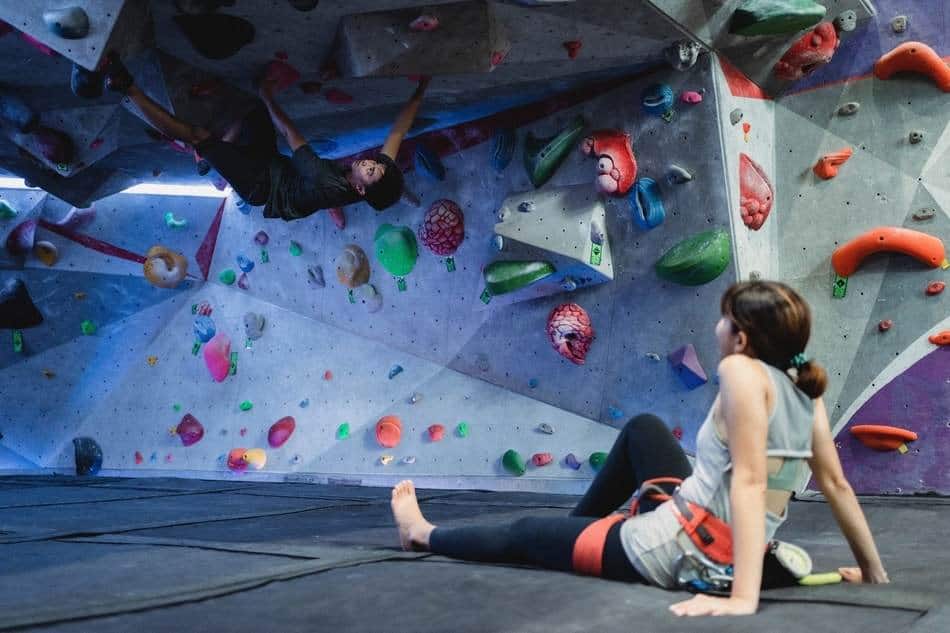
Give yourself some time during your breaks to engage with other climbers, I find that often I can get stressed out about a problem and simply having a quick chat with someone that’s also rest, I feel much better and more determined to climb.
Psychologically, the person you were talking to will be watching you and subconsciously your body will shift gears and give you extra energy to either impress or reduce embarrassment.
Even if you’re an introvert, try to do a bit of small talk, most people that boulders are either introverted or just don’t want the hassle to find and schedule a partner to belay. If you’re bouldering, you are literally surrounded by introverts.
There’s no shame in failing, there’s no gain that comes with no pain, climbers are a resilient class of people and we push each other to achieve new heights.
Repeat
I love climbing with all my heart! It’s such a diverse and positive community, so please don’t be discourage if you don’t have the strength to clear a few problems. None of us got there overnight.
Secret #10: Be Consistent and Be Persistent
The other thing I love about climbing is that size don’t matter, I seen people that appears in lesser shape than me do problems that still boggles my mind and I’ve seen others that are in tremendous shape, but struggle with the easiest problem.
Do not be discourage, be consistent and be persistent. Often people get jealous or discouraged by witnessing a fit body in action, but what they don’t see is what it took for them to get them looking that way.
You may have ulterior motives to get better at climbing, but at the end of the day, I think you should see climbing as a fun way to train and keep yourself in good health no matter what your body type may be.
We are born with what we’ve got, so make the best out of it.
Bonus Secret!
Gears
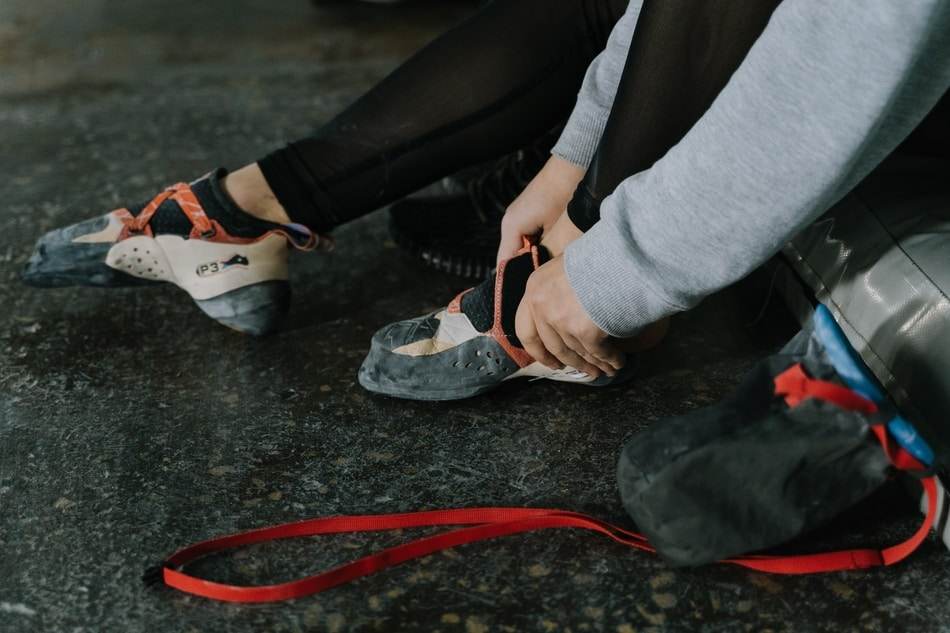
YOUR GEARS MATTER!
As much as I love free shoe rental and my local gym, they’re not going to help you climb better, they might even set your progress back.
Do yourself a favor an invest in a quality pair of climb shoes, they’re worth every penny and it can be the difference between you climbing a V3 to a V4 or a 5.6 to a 5.9.
If you’re still hesitating on buying a pair, don’t hesitate, good shoes are a must!
Oh, and I was also not a fan of using chalk when I first started, but now I use it for every climb. Even the world’s most elite climbers use chalk, so learn to use chalk.
Auto-locking belay device such as the GriGri by Petzl are great if you’re climbing and belaying. During a “Take” in top-rope (stands for taking a break), an auto-locking belay device can help reduce some of the tension and stress you need when holding down the rope.
This doesn’t excuse yourself from letting go of the ropes completely, but at least you know even if you get tired, your climbing partner will be safe.
So, these are my secrets to building climbing strengths, please share this with anyone who could use a few good tips or comment if you have some secrets of your own that you’d like to share.
